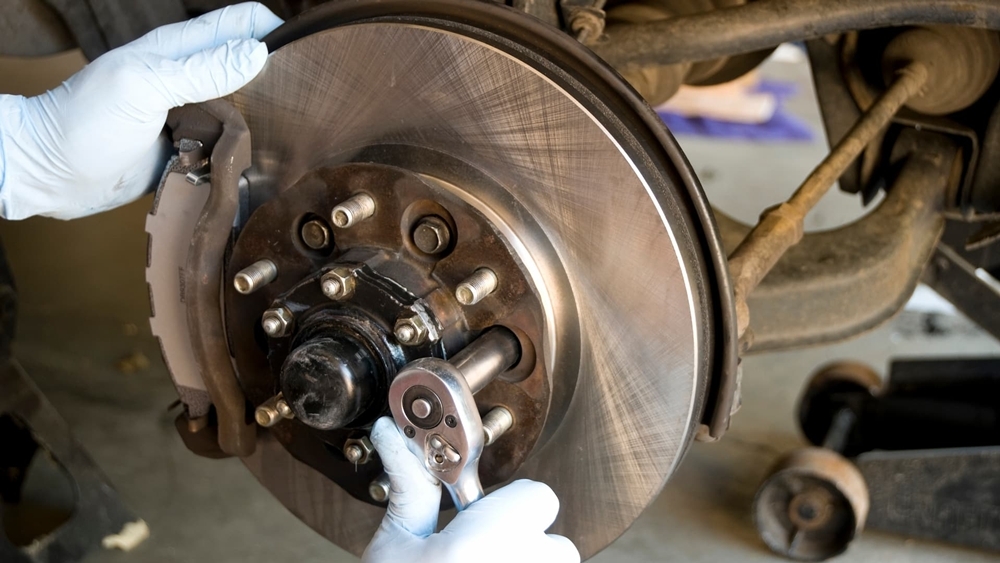Have you ever slammed on your brakes to avoid hitting a squirrel and wondered what’s actually happening under your foot? I certainly have! The truth is, those unassuming brake pads are the unsung heroes of your vehicle’s safety system.
In fact, according to the National Highway Traffic Safety Administration, properly functioning brakes prevent thousands of accidents every year, with brake failures contributing to approximately 22% of vehicle mechanical failure crashes! What types of brake pads you have on your vehicle is important in order to avoid accidents.
Also read: 8 Brake Disc Types Ranked – From Worst to Best (Some May Shock You)
Table of Contents
Your brake pads are literally the difference between stopping safely and, well… not stopping at all. But here’s the kicker – not all types of brake pads are created equal! The type of brake pad in your vehicle significantly impacts everything from stopping power and noise levels to dust production and longevity.
Whether you’re a weekend warrior tackling DIY car maintenance, a performance enthusiast seeking that perfect balance of grip and durability, or simply a conscientious car owner looking to make informed decisions, understanding the different types of brake pads is absolutely essential.
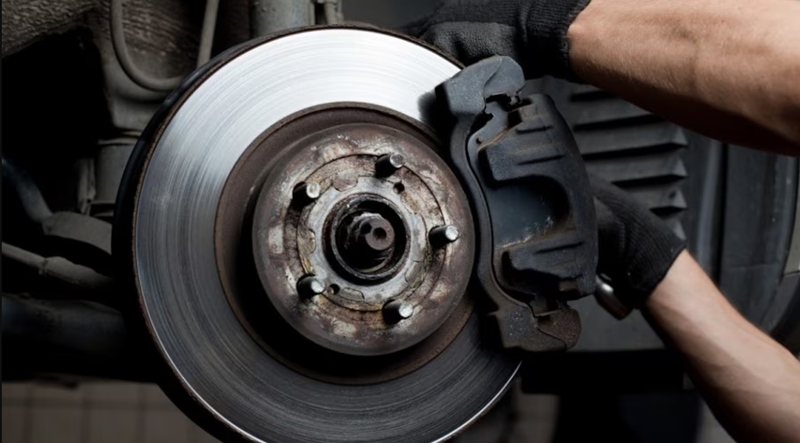
In this comprehensive guide, we’ll dive deep into the world of brake pads – comparing ceramic, semi-metallic, and organic options – to help you make the perfect choice for your specific driving needs and vehicle type. So buckle up (safety first!), as we embark on this journey through the fascinating world of friction materials!
Brake System Components and Operation
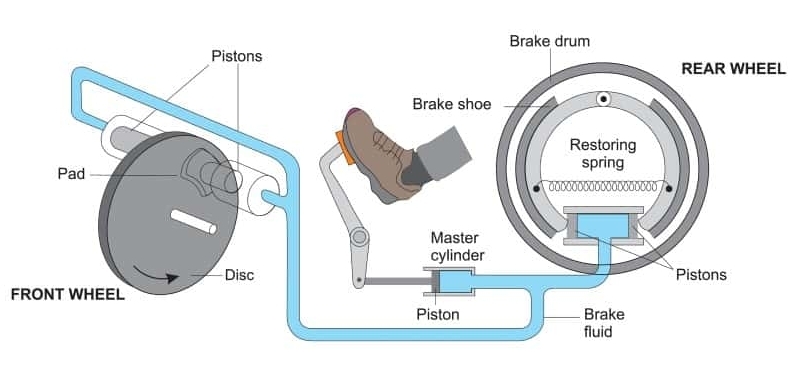
Your car’s braking system turns motion into heat using friction, and brake pads are central to this process. When you press the pedal, hydraulic pressure pushes the pads against the spinning rotor, creating friction that slows your wheels.
The effectiveness of this process hinges on high-quality types of brake pads working efficiently within the system. Different pads offer varying performance in terms of friction, heat management, and longevity. The main types of brake pads—ceramic, semi-metallic, and organic—each have unique pros and cons related to performance, noise, and wear. Matching the right type to your vehicle and driving habits is crucial for a smooth and safe braking experience. Most modern vehicles use disc brakes, while some older or budget-friendly models might still feature drum brakes in the rear.
Driving Habits
Your driving habits have a major influence on which types of brake pads will work best for your vehicle. Do you spend most of your time in stop-and-go city traffic? Do you regularly descend steep hills in mountainous regions? Or are you a weekend track warrior who loves to push your car to the limit? Each of these scenarios places different demands on your brake system—and different types of brake pads respond better to certain challenges.
Compare Brake Pad Types at a Glance
Wondering which brake pad material is best for your ride? This chart breaks down the most common types of brake pads, their unique features, and what kind of driving they’re best suited for. Use it to quickly compare and find the perfect match for your vehicle and habits
| Brake Pad Type | Key Characteristics | Pros | Cons | Ideal For |
|---|---|---|---|---|
| Organic (NAO) | Soft, quiet, made of non-asbestos materials | Inexpensive, quiet, low rotor wear | Shorter lifespan, lower heat resistance, more dust | City driving, gentle daily commuting |
| Semi-Metallic | Contains 30-70% metals, durable | Good stopping power, handles heat well, durable | Can be noisy, produces more dust, harder on rotors | Aggressive driving, towing, performance, hilly areas |
| Ceramic | Made of dense ceramic compound, copper fibers | Quiet, low dust, long lifespan, consistent performance | More expensive, less effective in extreme cold/heat for some applications | Luxury vehicles, daily drivers, quiet operation, less wheel cleaning |
| Performance/Track Specific | High friction, extreme heat tolerance (often semi-metallic or carbon-based) | Superior stopping power, minimal fade under extreme heat | Very noisy, high dust, harsh on rotors, not for street use | Racing, track days, heavy-duty towing (specialized) |

1. Organic Brake Pads: The Traditional Choice
Organic brake pads, also known as non-asbestos organic (NAO) pads, are a blend of materials like rubber, glass fibers, and resins. Among all types of brake pads, they offer some of the smoothest and quietest braking, commonly found in standard passenger vehicles. They generate minimal noise, are gentle on rotors, and are generally more affordable upfront.
Non-Asbestos Organic Brake Pad Composition and Benefits
These pads rose to popularity after asbestos was phased out due to health risks, offering a safer alternative. Organic pads are notably quiet, making them ideal if you dislike loud screeches. They are also easy on your brake rotors, which helps extend the life of other expensive brake components.
Organic Brake Pad Performance and Limitations
However, organic types of brake pads do wear out faster, especially in extreme climates or mountainous areas with frequent braking. They also produce more brake dust than other types of brake pads, leading to dirtier wheels. Despite this, for city or suburban drivers who don’t brake aggressively, these pads are reliable, quiet, and affordable, making them a solid choice for everyday driving.
Price and Ideal Use
Priced typically between $30–$70 per axle set, organic brake pads are the most budget-friendly option. Brands like Wagner, Bosch, and ACDelco offer reliable choices. They are best for daily commuters driving under mild conditions, offering a smooth, quiet ride and rotor protection. For longer life or high-stress performance, other types of brake pads like ceramic or semi-metallic might be more suitable.
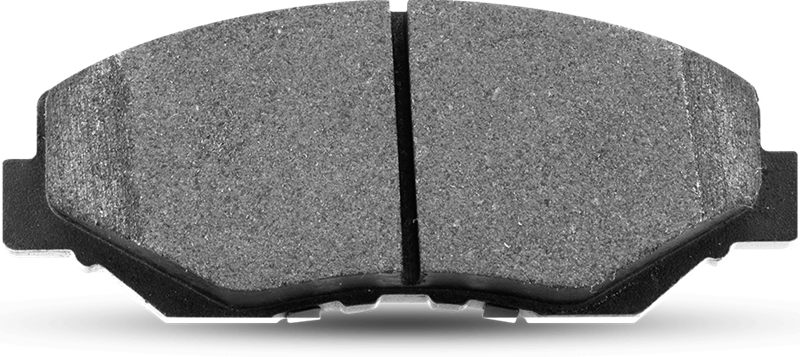
2. Semi-Metallic Brake Pads: The All-Rounder Option
Semi-metallic brake pads, composed of 30% to 70% metal with resins, are built for performance under pressure. They are a popular choice among the various types of brake pads due to several key advantages.
What Makes Semi-Metallic Pads Stand Out?
These types of brake pads excel in:
- Excellent heat dissipation: Metal content quickly draws heat away, reducing brake fade during heavy braking.
- Great stopping power: Consistent performance across a wide temperature range, ideal for towing, hilly terrain, or occasional track use.
- Durability: Most last 30,000 to 60,000 miles, depending on driving conditions.
For example, switching to semi-metallic pads in hilly areas significantly improves downhill braking, offering strong, consistent stopping power.
Trade-Offs to Keep in Mind
Despite their benefits, semi-metallic pads have compromises:
- Increased noise: Usually louder than other types of brake pads, especially when cold or worn.
- More rotor wear: Harder material can be tougher on rotors, potentially leading to more frequent replacement.
- Brake dust: They produce more dust than ceramic options, requiring more frequent wheel cleaning.
Ideal Uses and Value
Semi-metallic pads are perfect for:
- Trucks, SUVs, and heavier vehicles
- Towing and hauling
- Mountain driving or spirited weekend driving
Priced typically at $40 to $90 per axle set, they offer good value. Brands like Raybestos, Wagner, and Akebono provide various options. If you need strong performance, durability, and good value, semi-metallic pads are reliable workhorses for real-world driving.
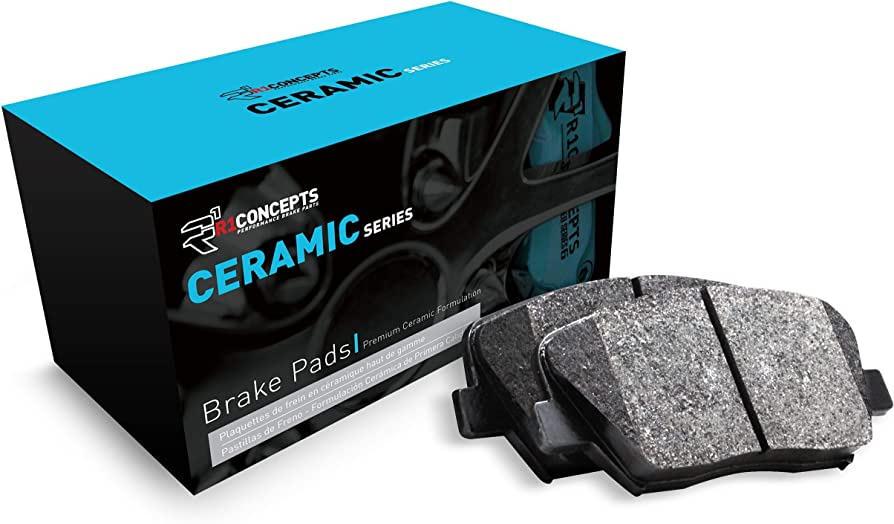
3. Ceramic Brake Pads: The Premium Alternative
Introduced in the 1980s, ceramic brake pads are among the most advanced types of brake pads available. Made from ceramic fibers and nonferrous fillers, they’ve become a top choice for quiet, clean, and smooth braking.
Why Choose Ceramic Brake Pads?
Ceramic pads offer several key advantages among the various types of brake pads:
- Ultra-quiet operation: Minimal squealing or squeaking.
- Low dust production: Keeps wheels cleaner.
- Long lifespan: Typically 40,000 to 70,000+ miles.
- Stable performance: Consistent friction across temperatures.
Their light-colored, non-stick dust is a big plus for vehicle appearance.
Considerations and Limitations
Despite their benefits, ceramic pads have trade-offs:
- Higher cost: They are the most expensive of the main types of brake pads, ranging from $70–$140 per axle set.
- Heat management: Less effective at absorbing and dissipating heat than semi-metallic pads, a drawback in extreme conditions like heavy towing or racing.
However, for most everyday drivers, their quiet, clean, and low-maintenance experience justifies the investment.
Ideal Use Cases and Top Brands
Ceramic brake pads are perfect for:
- Daily commuters
- Luxury or performance vehicles
- Drivers prioritizing quiet, clean operation
They’re not suited for high-load scenarios where heat buildup is a concern. Top brands include Akebono, Brembo, and Bosch. Many premium vehicles come factory-equipped with ceramic pads, highlighting their quality. If quiet stops, clean wheels, and durability are your priorities, ceramic pads are likely your best choice, despite the higher upfront cost.
Specialized Types of Brake Pads
Beyond the three main categories we’ve explored, there’s a whole world of specialized types of brake pads tailored to specific driving needs and conditions. From track days to towing trailers, these niche options show just how advanced modern brake technology has become.

Specialty Brake Pads for Specific Needs
Beyond the common categories, several specialized types of brake pads cater to unique driving demands, offering enhanced performance, durability, or environmental benefits.
Performance Brake Pads for Racing Enthusiasts
For aggressive driving or track use, performance brake pads are essential. These specialized types of brake pads leverage materials like carbon fiber and high-performance metals for maximum friction and heat resistance under extreme conditions. While they offer exceptional stopping power at high temperatures, they often have poor cold performance, faster wear, and increased noise. Brands like Hawk, EBC, and Ferodo are popular in the racing community, but these pads are generally not suited for daily driving.
Also read: Brake Fluid Flush: 7 Shocking Signs You Need One
Heavy-Duty Brake Pads for Towing and Hauling
If you frequently tow or haul heavy loads, heavy-duty brake pads are a smart upgrade. These types of brake pads feature reinforced materials and higher metallic content, allowing them to handle increased heat and weight. While they may produce more dust and noise, their added safety and control make them invaluable for work trucks, utility vehicles, and any vehicle regularly carrying heavy payloads.
Eco-Friendly and Copper-Free Options
Driven by environmental regulations, especially in California and Washington, the industry is shifting towards copper-free brake pads. Traditional pads release copper dust that can harm aquatic life. Today’s eco-friendly types of brake pads use safer alternatives without compromising performance. Look for the “LeafMark” certification for low-copper or copper-free standards.
Low-Dust Brake Pads for a Clean Look
For luxury car owners prioritizing clean wheels, low-dust ceramic formulations or specialty coatings minimize brake dust buildup. These pads are ideal for high-end vehicles and appearance-conscious drivers who prefer quiet, low-maintenance braking.
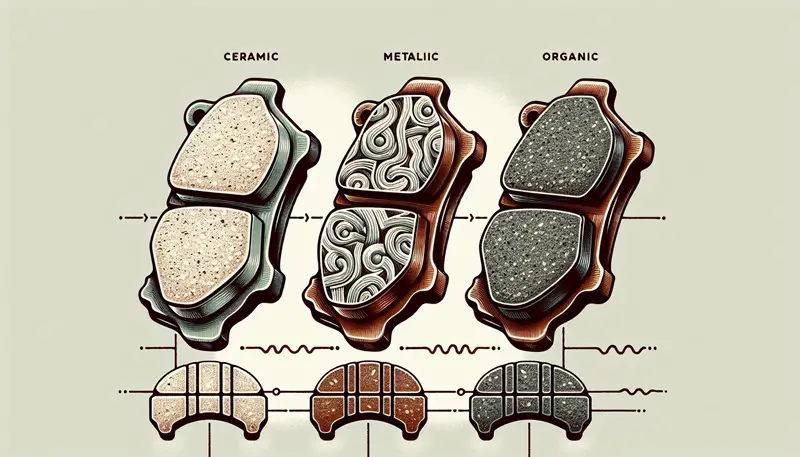
Carbon-Ceramic Brake Systems
At the pinnacle are carbon-ceramic brake pads, standard on many supercars and exotic sports cars. These ultra-premium types of brake pads provide unmatched heat resistance, minimal wear, and low weight. While their lifespan can exceed 100,000 miles, their price tag, often over $10,000 per set, makes them largely impractical for most daily drivers.
Electric Vehicle-Specific Brake Pads
Electric vehicles rely heavily on regenerative braking, so friction brakes are used less frequently—but often more suddenly. EV-specific pads are designed to perform well in these unique conditions, offering quick response, corrosion resistance, and long-term durability.
Whether you’re racing, towing, or just want to protect the planet, there’s a growing variety of types of brake pads to suit your needs. As new materials and technologies emerge, drivers now have more control than ever over how their vehicles stop—safely, efficiently, and responsibly.
How to Choose the Right Types of Brake Pads
Choosing the right types of brake pads isn’t just about price; it’s about matching them to your vehicle, driving style, and budget for optimal performance and value.
Match Pads to Your Driving Habits & Vehicle
Your driving style is paramount. Daily commuters will have different needs than those who tow or drive aggressively. Gentler drivers might prefer quiet types of brake pads like organic or ceramic, while aggressive drivers or those hauling heavy loads will benefit from semi-metallic options for better heat resistance and stopping power.
Vehicle weight also matters significantly. Heavy trucks and SUVs require pads designed for high heat and stress, while lighter cars might do well with low-dust ceramic pads.

Consider Climate & Long-Term Value
Climate plays a role too; some ceramic pads may underperform in extreme cold until warmed up, while other types of brake pads excel in hot or mountainous regions.
Beyond the initial price, evaluate the long-term value. Cheaper pads often wear faster, leading to more frequent and ultimately higher brake pad replacement costs. Factor in lifespan, rotor wear, and overall maintenance.
Understand Key Specs & System Compatibility
Familiarize yourself with brake pad specifications like friction coefficient (for stopping power), fade resistance (for repeated braking), and temperature range (for your climate). Also, ensure your chosen pads are compatible with your existing brake system to avoid premature rotor wear and extra costs.
Smart Replacement Practices for Any Brake Pad Type
When it’s time for a brake pad replacement, don’t just swap in new ones. Always inspect your entire braking system; worn rotors, sticky calipers, or old brake fluid can hinder even new pads. If you’re switching to different types of brake pads, like from organic to ceramic, ensure they’re compatible with your rotors and driving style.
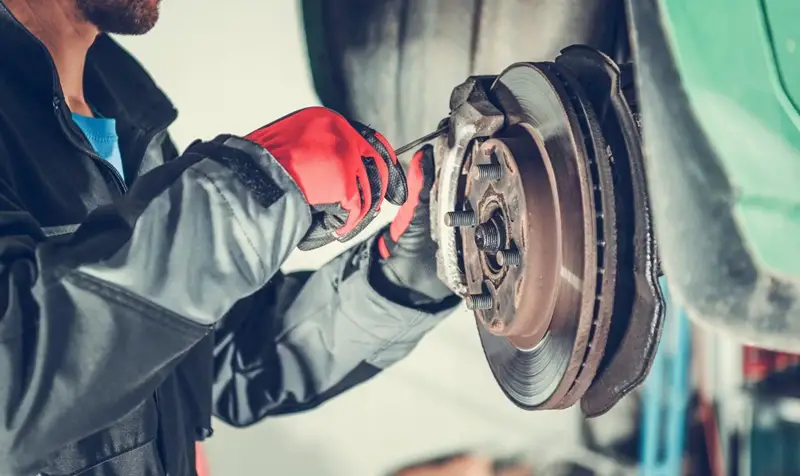
Brake fluid maintenance is key alongside pad replacement. Old fluid can lead to a spongy pedal and reduced power; flushing it every 2-3 years helps performance regardless of the specific types of brake pads you’re using. Many modern pads have wear indicators—don’t ignore them, as worn pads can damage rotors and increase future brake pad replacement cost. Finally, squealing or vibrations aren’t always just the pads; these could signal rotor or caliper issues, making a professional inspection wise to catch small problems early.
Take the Time to Get Your Brakes Right
Maintaining your brakes is crucial for safety and efficiency, not just extending pad life. With many types of brake pads available—from ceramic to semi-metallic and performance-specific—choosing the right one is only half the battle. The other half is proper care.
Good braking habits, regular inspections, and timely replacement of worn parts all contribute to a safer, more enjoyable drive. Whether you choose OEM pads, high-performance racing compounds, or eco-friendly options, your brake system deserves attention.
Ultimately, your brakes are your vehicle’s most important safety feature, and that peace of mind is worth every effort, including considering your brake pad replacement cost.
Need a mechanic? Find one on the Mobile Mechanic Directory
Final Thoughts: Brake Pads Matter More Than You Think
Choosing the right brake pads impacts your car’s performance, longevity, and crucial safety. Understanding the various types of brake pads is essential.
Quickly, the main types of brake pads include:
- Organic: Quiet, affordable, good for light driving, but wear faster.
- Semi-metallic: Strong stopping power and heat resistance, ideal for performance or heavy vehicles, but noisier and harder on rotors.
- Ceramic: Quiet, clean, and long-lasting, offering great everyday comfort despite higher cost.
Beyond these, specialized options like racing, towing-grade, low-dust, and eco-friendly formulations exist for specific needs. There’s no single best option for all; your ideal pads depend on your vehicle, driving style, and priorities like performance, price, or longevity.
Remember, even the best types of brake pads need proper installation, break-in, and routine maintenance to perform well. A few extra steps now ensure safe stops and save money long-term.



